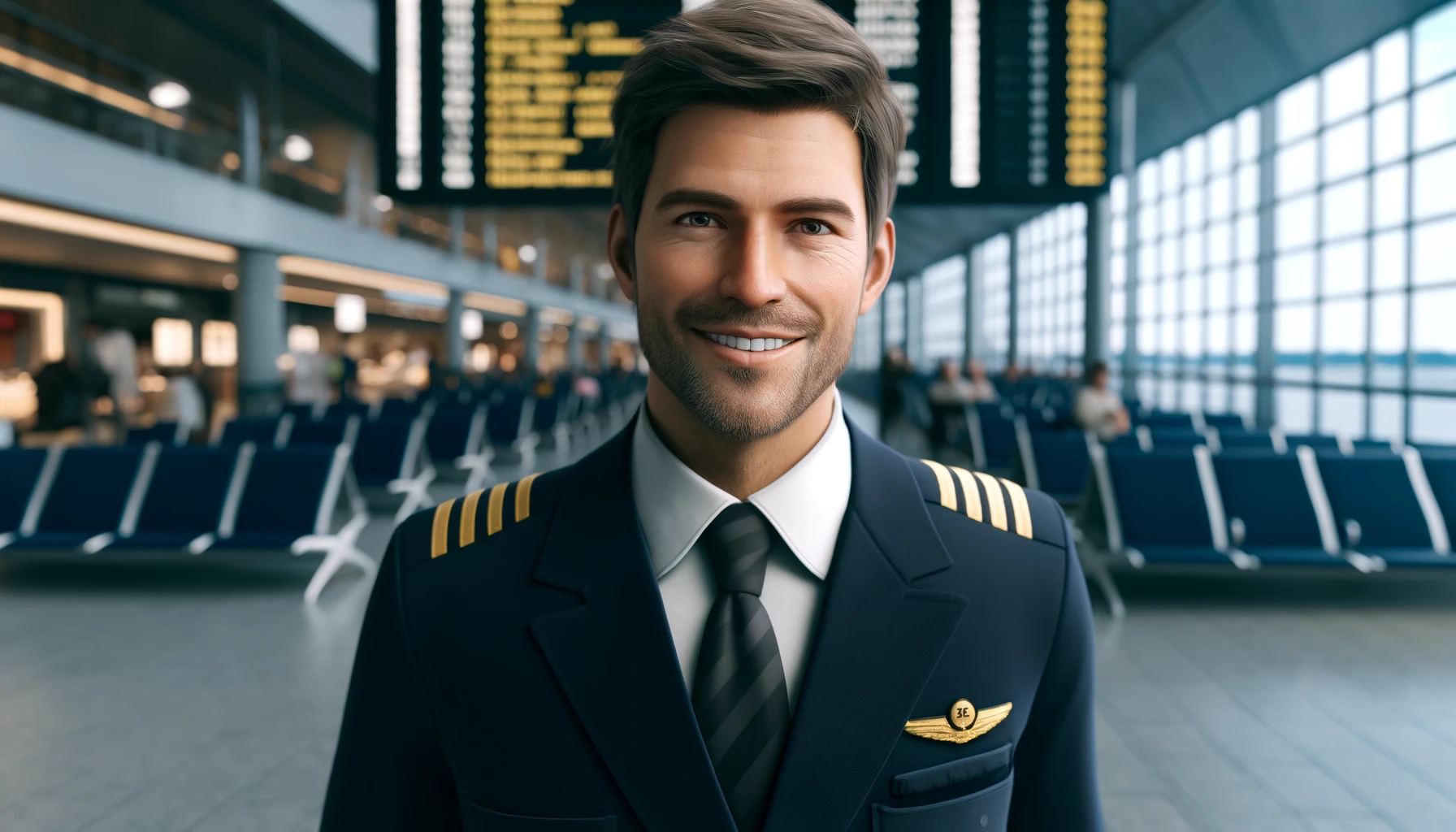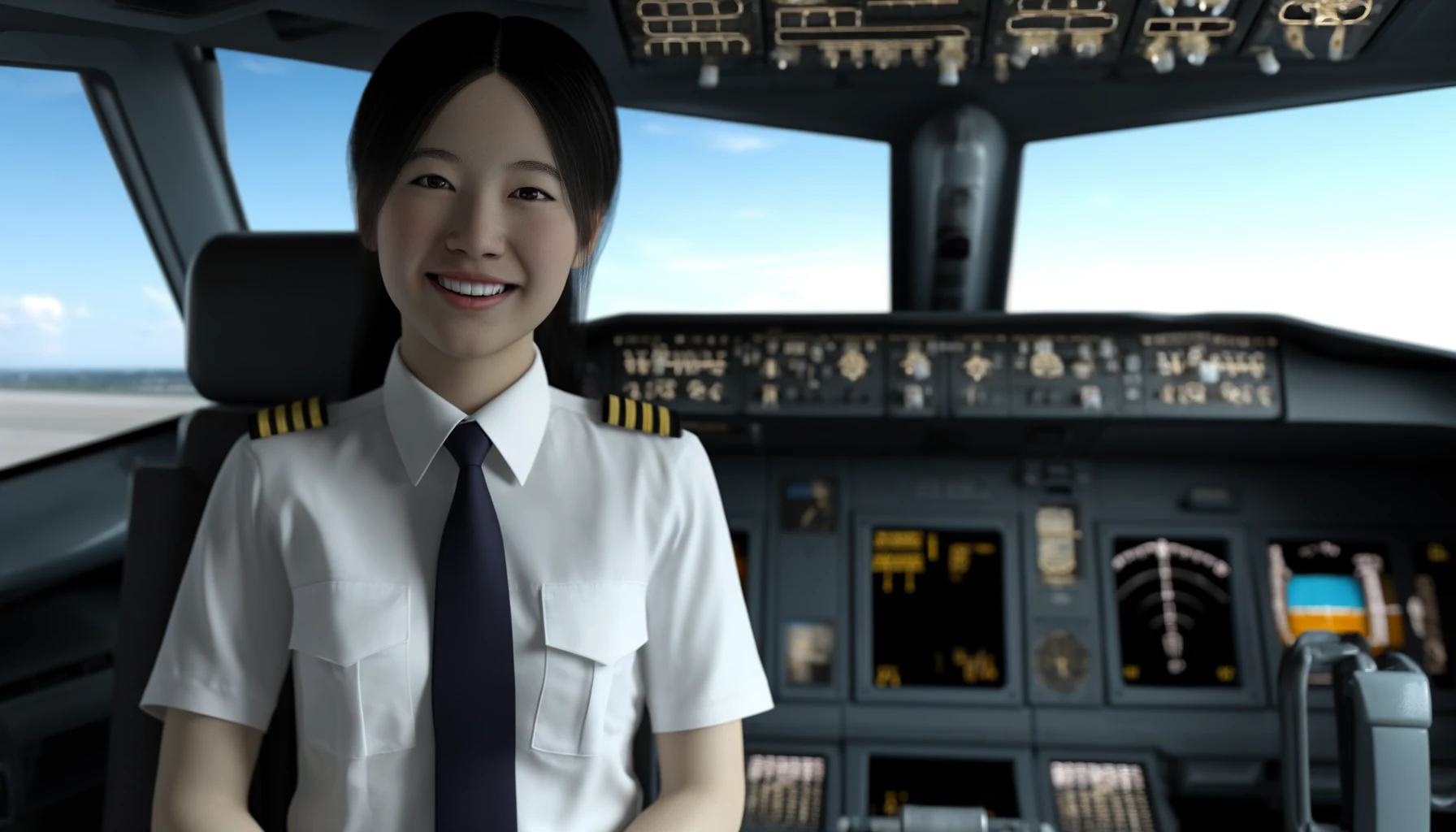Pilot Training: What It Takes to Fly an Airplane
For many, the allure of soaring through the clouds, commanding an aircraft with grace and precision, is an irresistible dream. But becoming a pilot is a path paved with dedication, discipline and unwavering passion for aviation.
The Fundamental Principles
Everything begins on solid ground, where aspiring aviators study the fundamentals of flight through ground school. Aerodynamics, aircraft systems, techniques and aviation regulations are learned here.
Once the groundwork is laid, aspiring pilots transition to the exhilarating realm of flight training. Whether in the cockpit of a real aircraft or within the immersive environment of a flight simulator, students take flight under the guidance of experienced instructors. They learn the art of aircraft control, master the nuances of navigation and hone their communication skills with air traffic control.

Pilot Licenses
In the vast expanse of aviation, there exists a diverse array of pilot licenses, each tailored to specific roles and responsibilities. Among the most common licenses are the Private Pilot License (PPL), Commercial Pilot License (CPL), and Airline Transport Pilot (ATP) License.
Private Pilot License (PPL)
The Private Pilot License is the gateway to the skies for many aviation enthusiasts. With a PPL, individuals can experience the joy of flight for personal enjoyment and non-commercial purposes. To obtain a PPL, aspiring pilots must complete a minimum of 40 hours of flight time, including 20 hours of dual instruction with an instructor and 20 hours of solo flight.
Commercial Pilot License (CPL)
The Commercial Pilot License opens doors to a lot of opportunities. With a CPL, pilots can fly for hire and perform a variety of commercial operations, including flight instruction, aerial photography, and charter flights. To earn a CPL, pilots must accumulate a minimum of 250 hours of flight time, e.g., 100 hours as pilot-in-command and 50 hours of cross-country flight.
Airline Transport Pilot (ATP) License
At the pinnacle of the pilot hierarchy lies the Airline Transport Pilot License, the gold standard for those aspiring to fly for major airlines. With an ATP license, pilots can command large commercial aircraft and operate flights carrying passengers and cargo. However, achieving this esteemed license requires a significant investment of time and dedication, with a minimum of 1,500 hours of flight time, including extensive cross-country and night flight experience.
The Financial Skyline: The Costs of Pilot Training
Embarking on the journey to become a pilot is not only a test of skill and dedication but also a significant financial investment. Pilot training costs can vary widely depending on factors such as the type of license pursued, the location of the flight school, and the type of aircraft used for training.
Private Pilot License (PPL) Costs
For many aspiring pilots, the journey begins with obtaining a Private Pilot License (PPL), which serves as the foundation for further aviation pursuits. The cost of obtaining a PPL can range from a few thousand dollars to upwards of $10,000, depending on factors such as the cost of aircraft rental, instructor fees, and ground school materials. While the initial investment may seem steep, the rewards of experiencing the freedom of flight are priceless.
Commercial Pilot License (CPL) Expenses
Aspiring pilots seeking to turn their passion for flying into a career often pursue a Commercial Pilot License (CPL) to unlock a myriad of professional opportunities. The cost of obtaining a CPL can vary significantly, with estimates ranging from $30,000 to $80,000 or more. Factors influencing CPL costs include the number of flight hours required, additional training endorsements (such as instrument and multi-engine ratings), and examination fees.
Airline Transport Pilot (ATP) License Investment
Achieving the pinnacle of pilot certification, the Airline Transport Pilot (ATP) License, is a significant milestone for those aspiring to fly for major airlines. However, the path to obtaining an ATP license requires a substantial investment of both time and money. With minimum flight hour requirements ranging from 1,500 to 1,750 hours, aspiring ATPs can expect to invest tens of thousands of dollars in flight training, aircraft rental, and examination fees.
Cost-Saving Strategies
While pilot training can be a significant financial undertaking, there are strategies aspiring pilots can employ to mitigate costs and make their dreams of flight more attainable. Many aspiring aviators choose to pursue their training through university aviation programs or military flight programs, which often offer discounted rates and financial assistance options. Additionally, some flight schools offer financing plans or scholarships to help offset the cost of training.
Planning for the Future
Despite the financial challenges of pilot training, the rewards of a career in aviation are immeasurable. By carefully planning and budgeting for training expenses, aspiring pilots can take proactive steps towards achieving their goals. From researching affordable flight schools to exploring financing options, investing in pilot training is an investment in a lifelong passion and a rewarding career.
The Sky's the Limit: Exploring Pathways to Pilot Training
Embarking on the journey to become a pilot is an exhilarating endeavor, but navigating the myriad of pathways to pilot training can be daunting. Fortunately, aspiring aviators have a multitude of options available to them, ranging from traditional flight schools to university aviation programs and military flight training. By exploring the diverse pathways to pilot training, aspiring pilots can find the program that best suits their needs, goals, and budget.

Traditional Flight Schools
For many aspiring pilots, traditional flight schools serve as the starting point on their journey to the skies. These flight schools offer comprehensive training programs that cover both ground school and flight training, providing students with the knowledge and skills necessary to earn their pilot licenses. With experienced instructors, modern training aircraft, and state-of-the-art facilities, traditional flight schools provide a solid foundation for aspiring aviators to launch their careers.
University Aviation Programs
For those seeking a more structured and comprehensive approach to pilot training, university aviation programs offer an ideal pathway to a career in aviation. These programs combine academic coursework with hands-on flight training, allowing students to earn a degree while obtaining their pilot licenses. University aviation programs often provide access to advanced training equipment, research opportunities, and networking connections within the aviation industry, preparing students for success in a variety of aviation careers.
Military Flight Training
For aspiring pilots with a desire to serve their country while pursuing their passion for flight, military flight training offers a unique pathway to pilot licensure. Military flight training programs provide rigorous and comprehensive training, encompassing both classroom instruction and hands-on flight training in a variety of aircraft. Graduates of military flight training programs emerge with the skills and experience necessary to excel in both military and civilian aviation careers, making them highly sought-after candidates by airlines and aviation companies.
Soaring Towards Success
Whether pursuing training through a traditional flight school, a university aviation program, or military flight training, the journey to becoming a pilot is one of adventure, discovery, and personal growth. With dedication, determination, and a passion for flight, aspiring pilots can take flight and soar towards success in the dynamic and exhilarating world of aviation.
Join us as we continue to explore the world of pilot training, uncovering the diverse pathways, opportunities, and adventures that await those who dare to dream of flight. With SkyShop by your side, your journey to the skies begins here, where every dream of flight is a possibility waiting to take flight.
